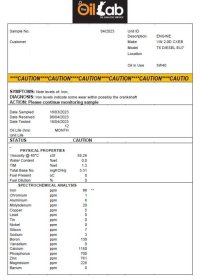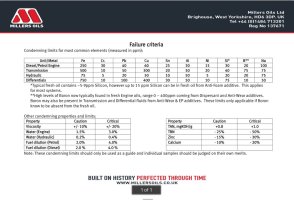Mates
I regularly get engine oil analysed, and never really have an issue. Report has just come back form the T6. 2017, 204 (CXEB), 45K miles. Oil is 12 months, 7k miles old, TPS Quantum 5W40, high levels of iron;

For comparison, my 140K mile old Cayenne 4.2 V8D came back at 29PPM iron. A 1200 mile BMW S58 engine came back at 25ppm iron and a 3K mile well driven Golf EA688 24ppm.
50ppm seems to be limit to start investigations, 100ppm is max permissible. I guess above that it turns to grinding paste!
I would think this is more likely form the bores than the crank, and could be bore scoring starting. Oil consumption is negligible, no other issues whatsoever. The 204 doesn't suffer from the same EGR cooler corrosion as the 180, but I guess if the EGR valve is stuck, it's ingesting all sorts of lumpy bits.
If it was crank, I'd expect to see higher copper readings as the shells would be wearing. No fuel or water in the oil which is good.
Any thoughts or comments?
I regularly get engine oil analysed, and never really have an issue. Report has just come back form the T6. 2017, 204 (CXEB), 45K miles. Oil is 12 months, 7k miles old, TPS Quantum 5W40, high levels of iron;

For comparison, my 140K mile old Cayenne 4.2 V8D came back at 29PPM iron. A 1200 mile BMW S58 engine came back at 25ppm iron and a 3K mile well driven Golf EA688 24ppm.
50ppm seems to be limit to start investigations, 100ppm is max permissible. I guess above that it turns to grinding paste!
I would think this is more likely form the bores than the crank, and could be bore scoring starting. Oil consumption is negligible, no other issues whatsoever. The 204 doesn't suffer from the same EGR cooler corrosion as the 180, but I guess if the EGR valve is stuck, it's ingesting all sorts of lumpy bits.
If it was crank, I'd expect to see higher copper readings as the shells would be wearing. No fuel or water in the oil which is good.
Any thoughts or comments?

